Dallas (214) 340-8885
Athens (903) 677-9090
Gun Barrel City (903) 887-4341
Dallas (214) 340-8885
Athens (903) 677-9090
Gun Barrel City (903) 887-4341

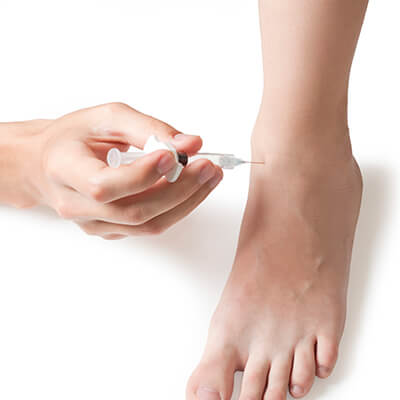 Platelet rich plasma, or PRP, is blood taken from a patient and spun in a centrifuge, concentrating the amount of platelets and growth factors. This plasma, containing a very high concentration of platelets, is re-injected into the site of injury or damage, inducing the body to repair damage to muscle, tendons, ligaments, and soft tissue. Although the body does this naturally when an injury occurs, the PRP helps speed the healing process.
Platelet rich plasma, or PRP, is blood taken from a patient and spun in a centrifuge, concentrating the amount of platelets and growth factors. This plasma, containing a very high concentration of platelets, is re-injected into the site of injury or damage, inducing the body to repair damage to muscle, tendons, ligaments, and soft tissue. Although the body does this naturally when an injury occurs, the PRP helps speed the healing process.
Many injuries to the foot, especially those affecting tendons, do not heal well because poor blood supply to the area prevents healing platelets and growth factors carried by the blood from getting to the injury site. PRP injections can help fix this problem and speed recovery.
This is the first regenerative treatment ever for damaged muscles, tendons, and ligaments. It avoids the need for surgery, and as it requires only the insertion of a needle, is minimally invasive. The injection of PRP is done with the use of ultrasound to ensure the proper placement of the platelets.
Once the first injection is received, the patient will return to the doctor's approximately 2 to 3 weeks later to be checked on how well the treatment is moving along. As with most treatments, each patient's response is different. Based on a patient's condition, the doctor will make the decision about how many more injections will be needed. Acute and chronic injuries will require more injections than mild ones.
Common injuries of the feet such as ankle sprains, Achilles tendonitis, and plantar fasciitis, as well as acute and chronic tendon and joint diseases such as arthritis, can all be treated with PRP injections. For many, this therapy has lead to greatly reduced pain and increased function of the foot. Combining exercise or physical therapy with the PRP injections will help increase the success of the treatment.
This treatment, being minimally invasive, means that surgery can be avoided, in many cases, and recovery time cut down. Other benefits of PRP injections are a decrease in scar tissue and fibrosis to the damaged area, as well as increased range of motion, flexibility, and strength. The risks from using PRP injections as a treatment is very low as the patient is injected with their own blood, so that there is no risk of rejection or of foreign bloodborne disease. As with any injection into the body, there is a risk of infection, but this is very rare. Research is showing that PRP may have an anti-bacterial property that would further decrease the risk of infection.
 EPAT (Extracorporeal Pulse Activation Technology) Laser therapy is a highly effective technology that has been used to accelerate the body’s natural healing process. The treatment itself is painless and non-invasive. It works by using pressure waves to treat and heal internal pain due to injuries that might be slow to heal. EPAT Laster therapy has been FDA approved and hasn’t been found to have any major side effects, other than minor discomfort that may be experienced while receiving the treatment. Some injuries that the EPAT Laser therapy works well with are: plantar fasciitis, stress fractures, tendonitis, and stress reactions.
EPAT (Extracorporeal Pulse Activation Technology) Laser therapy is a highly effective technology that has been used to accelerate the body’s natural healing process. The treatment itself is painless and non-invasive. It works by using pressure waves to treat and heal internal pain due to injuries that might be slow to heal. EPAT Laster therapy has been FDA approved and hasn’t been found to have any major side effects, other than minor discomfort that may be experienced while receiving the treatment. Some injuries that the EPAT Laser therapy works well with are: plantar fasciitis, stress fractures, tendonitis, and stress reactions.
EPAT works by the use of shock waves; they are essentially sound waves that operate at a high speed and pressure. Prior to the use of the treatment, a gel is applied to the area that is to be treated. This gel helps the shock waves from the laser reach maximum efficiency. When the actual treatment takes place, the applicator is moved over the affected area while the waves are simultaneously being released. When the therapy session is complete, the gel is wiped off, and the patient is able to be mobile immediately afterward. Each session lasts approximately 5-10 minutes and usually 3-4 treatment sessions are necessary at weekly intervals.
There are many benefits that come along with choosing EPAT Laser therapy as your form of treatment; one of them being that there are no incisions necessary. The fact that this treatment is completely non-invasive eliminates any possible complications that may occur as a result of surgery. Over 80% of people who opt for this therapy have experienced a successful outcome. Furthermore, this method is safe and cost-effective. While some patients report their pain goes away after the first treatment, it may take up to four weeks for pain relief to begin.
To ensure your convenience, below is the information you need about our podiatry offices, including our hours, location, appointment scheduling and insurance acceptance.
Appointments
If, for any reason, you cannot keep a scheduled appointment or will be delayed, please call as soon as possible. Charges may be incurred for appointments cancelled less than 24 hours before scheduled appointment time.
Insurance
Our office accepts a variety of PPOs, and other health plans. Please call our office to verify acceptance of your insurance carrier.
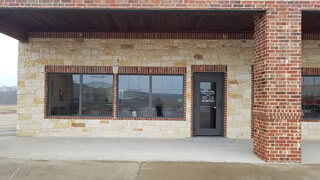
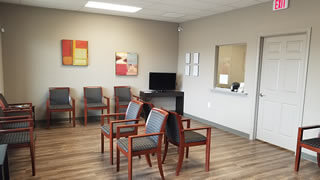
To ensure your convenience, below is the information you need about our podiatry offices, including our hours, location, appointment scheduling and insurance acceptance.
Appointments
If, for any reason, you cannot keep a scheduled appointment or will be delayed, please call as soon as possible. Charges may be incurred for appointments cancelled less than 24 hours before scheduled appointment time.
Insurance
Our office accepts a variety of PPOs, and other health plans. Please call our office to verify acceptance of your insurance carrier.
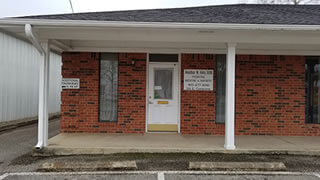
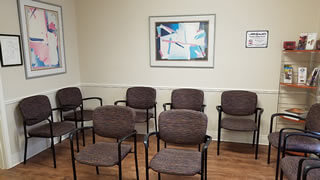
To ensure your convenience, below is the information you need about our podiatry offices, including our hours, location, appointment scheduling and insurance acceptance.
Appointments
If, for any reason, you cannot keep a scheduled appointment or will be delayed, please call as soon as possible. Charges may be incurred for appointments cancelled less than 24 hours before scheduled appointment time.
Insurance
Our office accepts a variety of PPOs, and other health plans. Please call our office to verify acceptance of your insurance carrier.
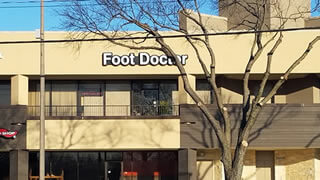
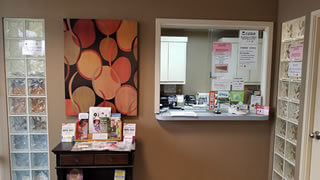
 Foot and ankle injuries are common among people who participate in sports. Several factors contribute to this. They include failing to stretch or warm up properly, not wearing the proper type of shoe and not taping or providing other types of support for the ankle or foot. The most common foot and ankle injuries suffered by people involved in sport are plantar fasciitis, ankle sprains and Achilles tendon damage or ruptures. If not treated properly they can lead to permanent disability.
Foot and ankle injuries are common among people who participate in sports. Several factors contribute to this. They include failing to stretch or warm up properly, not wearing the proper type of shoe and not taping or providing other types of support for the ankle or foot. The most common foot and ankle injuries suffered by people involved in sport are plantar fasciitis, ankle sprains and Achilles tendon damage or ruptures. If not treated properly they can lead to permanent disability.
Plantar fasciitis is a painful condition. It is inflammation of the plantar fascia, the thick fibrous band of tissue running from the heel to the base of the toes. There are several effective treatments for this ailment. Doctors often proscribe rest, massages, stretching, night splints, physical therapy, anti-inflammatory medication, corticosteroids or surgery usually in that order. The most effective treatment for plantar fasciitis is orthotics, such as foot supports. Surgery is occasionally used as a last resort.
The Achilles tendon is the largest tendon in the body. It connects the calf muscles to the heel bone. Running, jumping and walking all impact this tendon. Two common injuries to the Achilles tendon are tendonitis and a rupture of the tendon. Tendonitis is inflammation in the tendon often caused by an increase in the amount and intensity of stress placed on it. It can either be treated non-surgically with rest, ice or anti-inflammatory medication or surgery may be required. A rupture (tear) of the Achilles tendon can be treated by placing the lower leg in a cast for several weeks or with surgery. Many physicians feel surgery is the better option because it lowers the risk of re-ruptures. Both methods require 4 to 6 months of rehabilitation.
Ankle sprains are the most common sports related foot and ankle injury. A sprain occurs when the ligament holding the ankle bones and joint stretches beyond its normal range. It can be treated non-surgically with a combination of rest, ice wrapped around the joint for 30 minutes immediately after injury, compression by a bandage and elevating the ankle above the heart for 48 hours. This combination is referred to as RICE. Severe ankle sprains in which the ligaments are torn may require arthroscopic or reconstructive surgery followed by rehabilitation
Treating these injuries is relatively simple if they are identified and addressed early. Many athletes dismiss the initial aches and pains associated with injury as just soreness or tired muscles. Their first response is usually to try to work through it. This can lead to serious problems. Many minor injuries are made far more serious when athletes continue to put strain and pressure on them. That attitude can change a mild strain into a serious strain and a minor tear into a rupture. Athletes should have unusual aches and pains evaluated by a skilled, licensed medical professional.
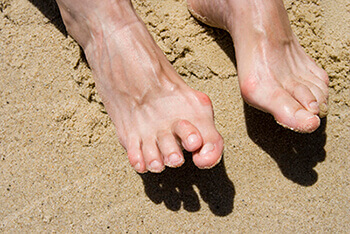 Hammertoes are painful deformities that frequently form on the second, third, or fourth toe. The condition is often caused by an issue in foot mechanics: the person’s particular gait or the manner in which they walk, or shoes that do not comfortably fit the deformity. Hammertoes can be formed after wearing shoes that are too narrow or short for the foot or have excessively high heels. Shoes that are not properly sized will force the toes into a bent position for long periods of time, causing the muscles to shorten and toes to bend into the deformity of a hammertoe.
Hammertoes are painful deformities that frequently form on the second, third, or fourth toe. The condition is often caused by an issue in foot mechanics: the person’s particular gait or the manner in which they walk, or shoes that do not comfortably fit the deformity. Hammertoes can be formed after wearing shoes that are too narrow or short for the foot or have excessively high heels. Shoes that are not properly sized will force the toes into a bent position for long periods of time, causing the muscles to shorten and toes to bend into the deformity of a hammertoe.
Hammertoe can also be caused by complications from rheumatoid arthritis, osteoarthritis, trauma to the foot, heredity, or a cerebral vascular accident. Pain and difficult mobility of the toes, deformities, calluses, and corns are all symptoms of a hammertoe.
Someone who suspects they have the symptoms of a hammertoe should consult with a physician—particularly a podiatrist. Podiatrists diagnose and treat complications of the foot and ankle. If the podiatrist discovers that the affected toes are still flexible, treatment for the hammertoe may simply involve exercise, physical therapy, and better-fitting shoes. Treatment for hammertoes typically involves controlling foot mechanics, such as walking, through the use of customized orthotics.
For more serious cases in which the toes have become inflexible and rigid, surgery may be suggested. During the operation, the toe would receive an incision to relieve pressure on the tendons. A re-alignment of the tendons may then be performed by removing small pieces of bone to straighten the toe. In some cases, the insertion of pins is needed to keep the bones in the proper position as the toe heals. The patient is usually allowed to return home on the same day as the surgery.
If surgery is performed to repair a hammertoe, following the postoperative directions of your doctor is pertinent. Directions may include several stretches, picking up marbles with your toes, or attempting to crumple a towel placed flat against your feet. Wear shoes that have low heels and a wide amount of toe space to maintain comfort. Closed shoes and high heels should be avoided. Shoes with laces allow the wearer to adjust how fitted her or she may want the shoes to be and also allow for greater comfort. To provide adequate space for your toes, select shoes that have a minimum of one-half-inch of space between the tip of your longest toe and the inside of the shoe. This will also relieve pressure on your toes and prevent future hammertoes from forming.Other preventative measures that can be taken include going shopping for new shoes in the middle of the day. Your feet are its smallest in the morning and swell as the day progresses; trying on and purchasing new shoes midday will give you the most reliable size. Be sure to check that the shoes you purchase are both the same size. If possible, ask the store to stretch out the shoes at its painful points to allow for optimum comfort.
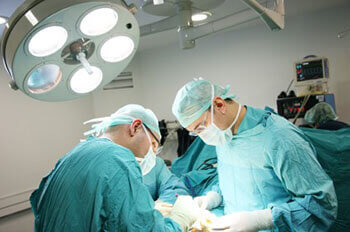 In most cases, foot surgery is often chosen as the last-available option for conditions that have otherwise been unsuccessfully treated. Surgery may be necessary for several reasons, including the removal of foot deformities (e.g. bone spurs or bunions), arthritis problems, reconstruction due to injury, and congenital malformations (e.g. club foot or flat feet). Regardless of one’s age, foot surgery may be the only successful option for treatment for certain conditions.
In most cases, foot surgery is often chosen as the last-available option for conditions that have otherwise been unsuccessfully treated. Surgery may be necessary for several reasons, including the removal of foot deformities (e.g. bone spurs or bunions), arthritis problems, reconstruction due to injury, and congenital malformations (e.g. club foot or flat feet). Regardless of one’s age, foot surgery may be the only successful option for treatment for certain conditions.
The type of surgery one undergoes depends on the type of foot condition the patient has. For the removal of a growth, such as a bunion, a bunionectomy is necessary. If the bones in the feet need to be realigned or fused together, a surgical fusion of the foot is needed. For pain or nerve issues, a patient may require surgery in which the tissues surrounding the painful nerve are removed. Initially, less invasive treatments are generally attempted; surgery is often the last measure taken if other treatments are unsuccessful.
While in many cases surgery is often deemed as the final resort, choosing surgery comes with certain benefits. The associated pain experienced in relation to the particular condition is often relieved with surgery, allowing patients to resume daily activities. The greatest benefit, however, is that surgery generally eliminates the problem immediately.
Podiatry history has shown that foot treatments continue to evolve over time. In the field of foot surgery, endoscopic surgery is just one of the many advancements. As technology vastly improves, so will the various techniques in foot surgery, which already require smaller and smaller incisions with the use of better and more efficient tools. Thanks to such innovations, surgery is no longer as invasive as it was in the past, allowing for much faster and easier recoveries.
 A bunion is an enlargement of boney growth or swollen tissue typically located at the base joint of the big toe. The condition is caused by the shifting of the bones in the big toe inward, toward the other toes of the foot. The area around the base of the big toe may become inflamed, red, and painful.
A bunion is an enlargement of boney growth or swollen tissue typically located at the base joint of the big toe. The condition is caused by the shifting of the bones in the big toe inward, toward the other toes of the foot. The area around the base of the big toe may become inflamed, red, and painful.
Genetic factors are important in the formation of bunions – people who get bunions are usually genetically predisposed to this bone displacement and may cause its onset by wearing ill-fitting shoes or by running or walking in a way that causes stress to the feet. Another common cause for bunions is wearing high heeled shoes. The weight of the body in these shoes pushes the toes into an unnatural position, possibly causing bone displacement.
A podiatrist who specializes in foot structure and biomechanics can quickly diagnose bunions. Bunions must be distinguished from gout or arthritic conditions, so blood tests may be necessary. The podiatrist may order a radiological exam to provide an image of the bone structure. If the x-ray demonstrates an enlargement of the joint near the base of the toe and a shifting toward the smaller toes, this is indicative of a bunion.
Wearing wider shoes can remove the pressure on the bunion and reduce pain. High heeled shoes should be eliminated for a period of time as this type of shoe generally pushes the big toe outward toward the smaller toes. This may be enough to eliminate the pain associated with bunions; however, if pain persists, anti-inflammatory drugs may be prescribed. Severe pain may require an injection of steroids near the bunion.
Orthotics for shoes may be prescribed which, by altering the pressure on the foot, can be helpful in reducing pain. These do not correct the problem, but by eliminating the pain, they can provide relief.
For cases that do not respond to these methods of treatment, surgery can be done to reposition the toe. A surgeon may do this by either taking out a section of bone or by rearranging the ligaments and tendons in the toe to help keep it properly aligned. It may be necessary even after surgery to wear more comfortable shoes that do not put pressure on the toe as the big toe can easily move back to its orientation toward the smaller toes.